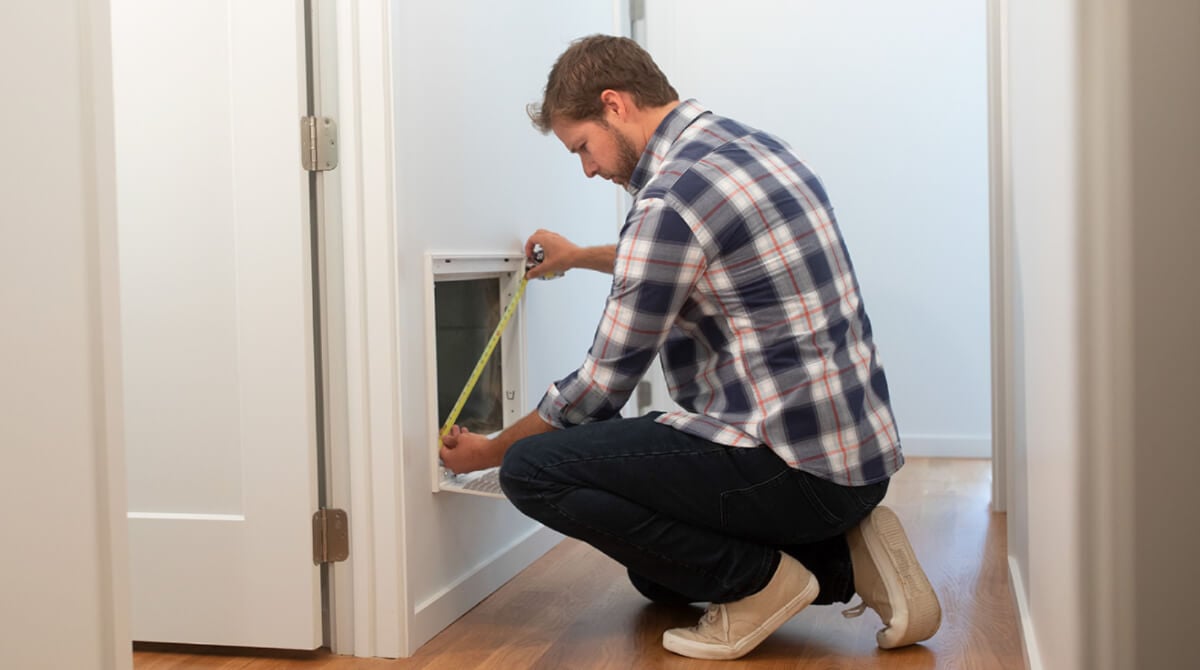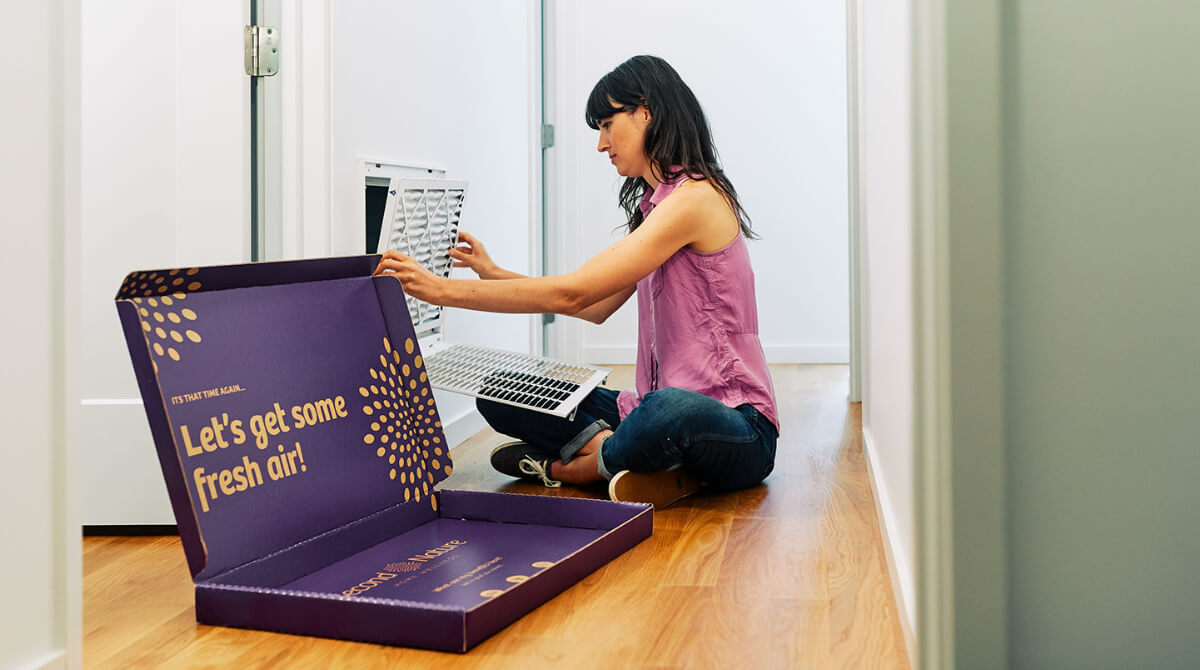Introducing Second Nature, The Preeminent Home Wellness Brand
In today’s modern world, it’s easy to neglect your home. That’s why we developed a convenient subscription delivering home wellness solutions direct to your door. Rebranding What's in a name? Shakespeare would seem to argue not a whole lot given his infamous "a rose by any other name..." quotation. But, as I can personally attest, names are a big deal (just ask any soon-to-be parent...or someone leading a rebrand for a company). For anyone who might be curious, changing the name of a company isn't something that occurs overnight. Nor is it something that transpires without a hearty discussion...or fifty. There can be so much history, so much emotion, so much pride tied up in a name. And, of course, everyone has an opinion they firmly believe is the right opinion. So, why and how does a fast-growing company determine whether it should change its name and then embark on the daunting journey to rebrand itself? You might imagine a bombastic owner or a dogmatic CEO banging her fist against the table, proclaiming she's bored of the company's name and has a brilliant idea to revitalize the company's image. Or, maybe you envision a youthful, energetic start-up holding a naming contest among its employees, drawing a final name out of a hat during a happy hour. These scenarios may very well transpire at some companies, but they could not be further from how we arrived at the decision to rebrand our company from FilterEasy to Second Nature. Truth be told, we never set out with the explicit purpose to change our look...or our name. Rather, we began by challenging ourselves to think long and hard about how we could create more value for our customers—how we could surprise and delight them with every interaction. We knew we needed to be smarter, more strategic, and more laser-focused if we were to broaden our company's ambitions, and we agreed building a beloved brand would be the best way to win with customers. At that point, everything was put on the table for evaluation, including the name FilterEasy. The FilterEasy Era Our company has experienced an incredible journey since 2012, and it began when two North Carolina State University students harnessed their passion for entrepreneurship and honed in on an opportunity to create a better experience for homeowners who struggled to stay on top of an important but out-of-sight, out-of-mind home maintenance task: changing out dirty air filters. The idea was simple yet brilliant—make it impossible to forget to change air filters by automating delivery direct to homeowners' doors on a customizable schedule. The solution was so obvious to them and made conquering a simple household chore so easy, they almost immediately decided to name the company FilterEasy. The company's history follows the classic storybook start-up success story. Two passionate and ambitious students drop out of college to pursue a business idea, set up operation in a garage, live off of ramen noodles and peanut butter, move locations countless times, and, through hard work, grit, and determination, scale up a super successful business servicing hundreds of thousands of customers. The chronology follows the happy path so tightly, one might infer nearly all start-ups experience the same success story toward "making it". In reality, the start-up scene can be trying and tumultuous, and our company has proven to be a diamond in the rough. While a little luck is always involved in any start-up breakthrough, our success has directly correlated to our ability to solve a clear and present customer pain point and our resolute focus on doing right by our employees, our partners, and, most importantly, our customers. In fact, our passion to create real value in the market has been our guiding light and is purely what prompted our journey to rebrand to Second Nature. The Decision to Rebrand So, why would we make the decision to change our company’s brand if we had achieved a number of successes in a relatively short period of time, all under the banner of an intuitive brand name that communicated our offering? Well, the answer to that question is simple but long-winded. And, it’s centered on some tough questions we asked ourselves as we reflected on a successful 2017 and looked forward into the future: Did we fundamentally understand our market and the opportunities that existed within it? Did we understand our customers’ needs, wants, desires, dreams? Did we know how they wanted to spend their free time? What stressed them out? What kept them up at night? And, most importantly, did we understand why we fit into our customers' lifestyle and where we could provide even more value? In early 2018, we invested in some prudent market research to better understand our customers and the broader market, as well as to evaluate our business challenges and opportunities. As we peeled back the layers of the proverbial onion, we defined our target audience and learned some fascinating insights about our existing customers. Still, we wanted to learn more, so we conducted interviews and focus groups to gather additional insights that would help us better contextualize our target audience. In short time, we began to comprehensively understand our target’s lifestyle and need-states, and new business opportunities lit up our radar. As we refined our strategy in light of the market insights, we developed a more unique and compelling market positioning. We saw an opportunity to harness our existing platform, centered on delivering convenience to busy professionals and families, and expand it to help customers tackle home maintenance tasks that were oft-forgotten but could impact the health of the home environment and potentially cause costly repairs and replacements. Ultimately, we decided we wanted to help our customers take better care of one of their most valuable assets, their home, and we knew that convenience was the vehicle to facilitate our refined purpose. Through the lens of our newly articulated brand purpose, we scrutinized the name FilterEasy. We questioned whether the name would continue to intuitively communicate our value proposition or whether it would potentially water down or confuse our vision for the future of the company. Through multiple ideation sessions, concept tests, and analysis, we determined the best, most strategic option was to rename the company and relaunch the brand. We developed a number of viable strategic brand names we thought would provide a great runway for us, and we tested them with our target audience. Time and again, Second Nature outperformed the other options. The answer was clear: we had found our new name. Introducing Second Nature Second Nature is the synthesis of a lot of smart market research. The name embodies our brand’s mission to empower the modern-day homeowner to be master of his or her household, never forgetting to stay on top of all of the out-of-sight, out-of-mind to-dos. It also provides a great strategic base on which we can bring to life and grow our brand and continues to evoke the ease and simplicity of our convenience model. We aim to transform people’s home habits so that important home wellness tasks become second nature and never go neglected. Additionally, the secondary, almost subconscious, meaning of the name allows us to pursue products that are eco-conscious and help our customers do their part in restoring nature to its purest state, and, in a way, bring about a second nature. We know it’s hard to keep up with everything related to health and wellness these days, but with us, our customers are able to make home wellness a habit. As we move forward on our journey, we will empower our customers to better care for their refuge from the busy, chaotic world. In doing so, we hope they’ll see that good home wellness habits lead to a better sense of personal wellness. With Second Nature, we have developed a new identity system that includes illustrations, iconography, packaging, web design, and photography art direction. The identity should evoke a fun-loving and optimistic personality that is compassionate and empathetic in its approach. We want our customers to view Second Nature as a brand that selflessly puts others a mile ahead of itself and is willing to help out family and friends when they need someone they can count on. By the same token, we want customers to view Second Nature as a colorful brand that knows how to have a good time and gets along with other people effortlessly. Think of us as the zany yet responsible friend who implicitly knows when you need a good laugh, when you need a shoulder to cry on, and when you need a helping hand because you’re feeling overwhelmed in the moment. Our new logo takes the shape of a spiral floral pattern inspired by the Fibonacci Sequence, which is a mathematical pattern found everywhere in nature and throughout time. It explains the natural order of our world. All around us are rhythms and cycles we hardly notice, but without which we wouldn’t be able to function. The bloom reflects patterns of growth spirals such as those found in pine cones, sea shells, seeds, and flowers. And, like the healthiest of flowers, proper home wellness is dependent on a cyclical influx of the right elements. For fields of daisies, we’re referencing sun, soil, and rain. But, for the homeowner, it’s the products Second Nature dependably, continuously provides. We will continue to push our brand in new and exciting directions in the months and years to come, and we’ll be guided by our customers. We plan to release several new products and services over the next twelve months, including a refrigerator water filter product coming this winter. We aim to provide easy solutions to common problems, and we’ll always be enthusiastic about sharing. We’ll also upgrade our experiences and create surprise and delight interactions that provide a moment of relief for our busy, time-starved customers. We want everyone to feel encouraged and energized after an interaction with us or our content. Drop our Customer Care team a note if you have any comments you’d like to share—we’re always open to feedback and want to know how we can better serve our customers. Parting Thoughts So many people think a rebrand simply involves locking a handful of designers and copywriters in a room so their brains can conjure up all sorts of interesting colors, patterns, typefaces, etc. While contemplating these types of artistic elements is certainly part of the process, there are so many other activities and conversations involved when reimagining a brand. We truly think we got it right in developing Second Nature. And, our excitement for our new brand is held with conviction because we listened to our customers and asked all sorts of insightful questions that got us to where we are right now. Second Nature isn’t the brainchild of one or two people at our company; it is the brainchild of a collaboration with our customers and our target audience. This rebrand has, by far, been the most exciting, the most rewarding, and the most fun business endeavor I've had the honor of leading in my career. I hope each and every customer falls in love with Second Nature to the degree the team and I have throughout the process of developing it. I'm confident it will quickly become one of your trusted, beloved brands because our company is obsessively focused on creating meaningful value for customers by helping homeowners maintain a healthy home environment for themselves and their loved ones.
 February 6, 2023
February 6, 2023
Read more

February 6, 2023











